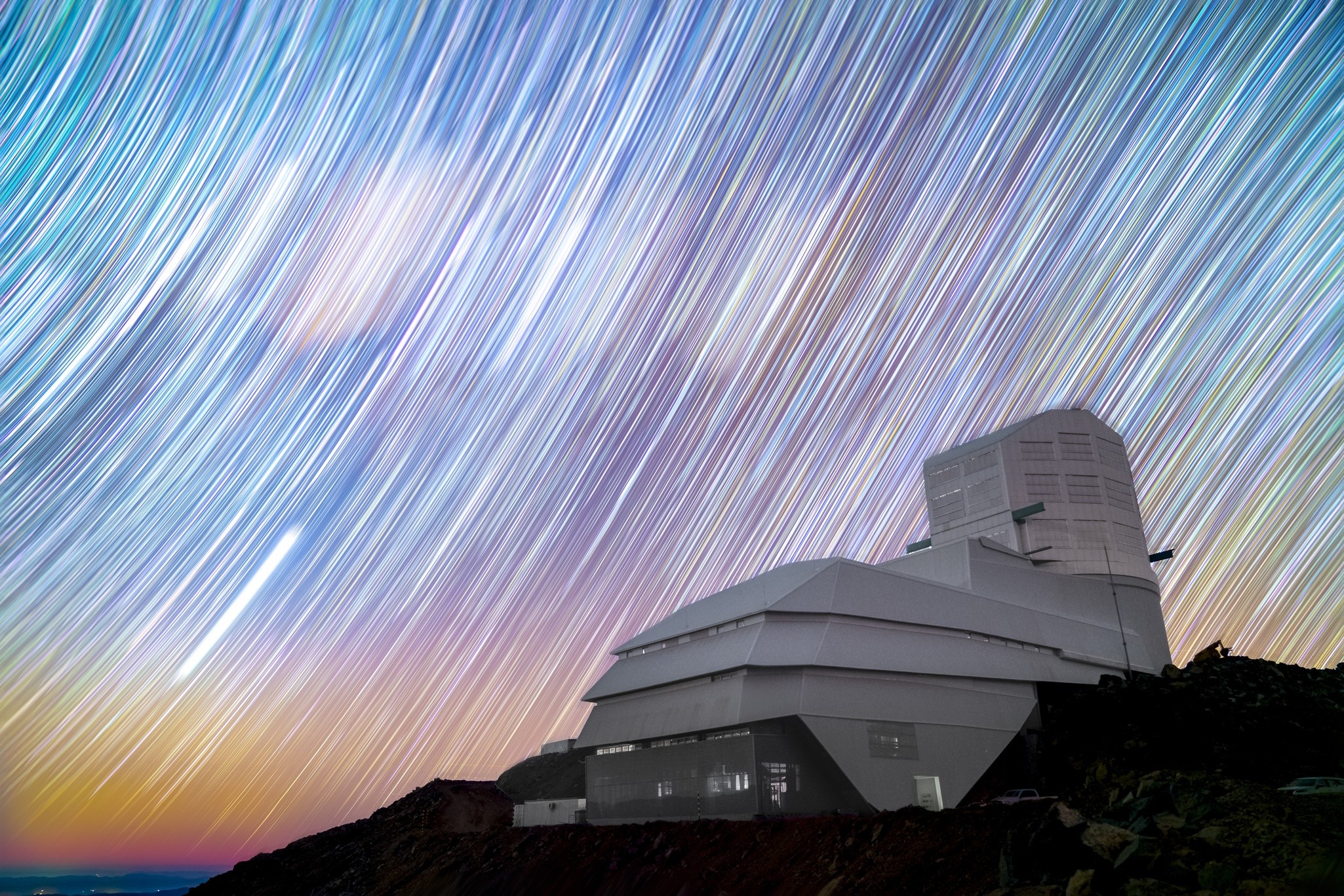In a galaxy teeming with potentially habitable planets, it’s reasonable to speculate that other spacefaring civilizations exist — and perhaps even that some, or their robotic probes, have already reached Earth. The distances between stars are daunting, yes, but if travel time doesn’t matter — either because the aliens are non-biological robots or because they go dormant for the trip (some cicadas, for example, sleep 17 years underground only to emerge for a few months) — the possibility of extraterrestrial visitors can’t be ruled out.
That raises an obvious question: As the physicist Enrico Fermi famously asked, “Where is everybody?” Despite thousands of UFO/UAP sightings in the past 80 years alone, there is still no generally accepted evidence of an alien spacecraft reaching Earth.
It’s not as though we haven’t looked. Any number of telescopes and spaceborne cameras might have spotted an incoming spacecraft that came close to us. Ground-based telescope networks can detect objects as small as 10 centimeters as far out as geosynchronous orbit (22,000 miles altitude). In recent decades, NASA-funded early-warning systems like the Catalina Sky Survey and the Asteroid Terrestrial-impact Last Alert System (ATLAS) have been on constant lookout for asteroids that might threaten Earth. ATLAS is able to spot a small (~20-meter) asteroid several days out, and a 100-meter asteroid several weeks out.
Every once in a while, these sentinels even mistake one of our own probes for an asteroid. In 2020, for example, Catalina dutifully reported a moving object in space, presumably yet another flying rock, that was quickly recognized as the BepiColumbo spacecraft making a close approach to Earth.
So far, though, nobody’s spotted any alien probes. Despite early speculation that an interloper called ’Oumuamua, discovered in 2017 — still one of only two large objects known to have arrived from outside our Solar System — might be artificial, the consensus is that it’s just another space rock.
The Vera C. Rubin Observatory
Our ability to spot such interstellar visitors is about to take an enormous leap, however. This summer, the Vera C. Rubin Observatory, one of the most eagerly awaited telescopes of all time, is due to see its “first light” on a remote mountaintop in Chile. Conceived more than a quarter century ago as the Large Synoptic Survey Telescope or LSST, Rubin’s job, as the original name implies, is to take pictures of the entire southern sky with high sensitivity, using the largest digital camera ever built. More importantly, it will repeat its all-sky survey every three to four nights for at least a decade.

Like any big observatory, it will tackle practically every problem in astronomy, from black holes to dark matter to Earth-threatening asteroids, and its position against the stellar background will change from one scan to the next. Over the next decade, Rubin is expected to discover millions of new objects, generating a staggering 20 terabytes of data every night. In the first month of the survey alone, it could double the number of known small bodies in our Solar System, spotting asteroids much farther out than ever before.
Estimates of how many of those objects might come from interstellar space vary widely. We only have two examples so far, and spotting them will depend on what they’re made of, the shape of their orbits, how bright they are, and other factors. Some researchers predict Rubin will see just one of these a year. Others think it could be as many as one a week. Either way, Rubin should find many more interstellar objects than the two we know of today.
Distinguishing natural from artificial
But how can we tell the difference between natural objects — like ‘Oumuamua — and actual spacecraft? After all, these could range from massive motherships, like those in Close Encounters, to small probes like the Voyagers, which we launched into interstellar space with our own 20th-century technology.
It’s a tricky problem. James Davenport of the University of Washington is among those who’ve speculated about how the Rubin Observatory, with its unprecedented power, might be able to spot alien “technosignatures,” including spacecraft. Natural objects like comets entering the Solar System from interstellar space typically would follow a hyperbolic orbit (as distinct from an elliptical orbit around our Sun). In a time sequence of Rubin’s every-three-nights snapshots, this would show up as a series of dots against the stellar background, which astronomers could piece together to extrapolate the object’s entire orbit. The path might show little deviations here and there, caused by everything from sunlight pressure to outgassing if the objects are like comets. Even so, the trajectory should appear generally smooth and predictable.
But, says Davenport, “If they make a right turn, or if they make a very unusual motion,” it could suggest some kind of propulsion or steering by an artificial probe. Astronomers should be able to detect these “non-gravitational accelerations” in the Rubin data, provided they aren’t so extreme that algorithms being developed to sift through all that information have trouble recognizing observations from successive Rubin snapshots as belonging to the same object.
Even with Rubin’s exquisite sensitivity (down to 27th magnitude), small interstellar objects will still only appear as featureless specks. What else might distinguish an alien spaceship from a comet? An especially weird spectral profile, perhaps? Several objects flying in formation (assuming those objects aren’t just pieces of a broken rock)? It’s hard to say. Nobody’s ever seen an incoming alien spaceship.
As a kind of test case for how to identify a small, distant artificial object in space, Davenport has considered the Tesla vehicle that SpaceX launched as a dummy payload for its Falcon Heavy rocket in 2018. Right now, the red roadster is in an elliptical solar orbit that reaches a little beyond Mars. Davenport once thought it might stand out in the Rubin data as a technosignature, but his latest modeling makes him not so sure. For one thing, the cherry red paint that would flag it as unusual may have faded. In fact, small artificial objects like the Tesla would be a tough observational challenge for any telescope. Take our own Voyager spacecraft, for example, which we know will pass other star systems someday in the far future. Unless a similar probe sent by an alien civilization came very close to us — say, inside of Saturn’s orbit — “Even in the Rubin era, we might not notice,” Davenport says.
But we won’t know the new telescope’s capability until it’s up and running, and it might surprise us. Other observatories may join in the search as well. In a 2019 paper, Brian Lacki with the Breakthrough Listen Initiative at the University of California at Berkeley suggested that mirror-like flashes from lightsails or flat surfaces on artificial spacecraft might appear as bright, transient light sources in current and future sky surveys. He suggested that the Argus array, planned for installation in the mountains of North Carolina, might be ideal for this kind of search. Even though it’s not as sensitive as Rubin, it will scan the sky much more rapidly, with a “cadence” of minutes rather than days.
So the search for alien spaceships is about to level up. We’ll soon have our best chance yet of spotting whoever, or whatever, might be headed our way. Of course, it’s entirely possible there’s no them there at all. Or if “they” come in from the north, the south-facing Rubin telescope won’t see them. Or if they’re equipped with that staple of science fiction, a cloaking device (no fair!), they’ll be invisible. Or maybe they’re so advanced that they manipulate space-time in some way we don’t understand, and don’t even need a physical spaceship.
In that case, let’s just hope they’re friendly.
This article The hunt for alien technosignatures is getting a high-tech upgrade is featured on Big Think.

The post “The hunt for alien technosignatures is getting a high-tech upgrade” by Tony Reichhardt, Dirk Schulze-Makuch was published on 06/03/2025 by bigthink.com







































Leave a Reply